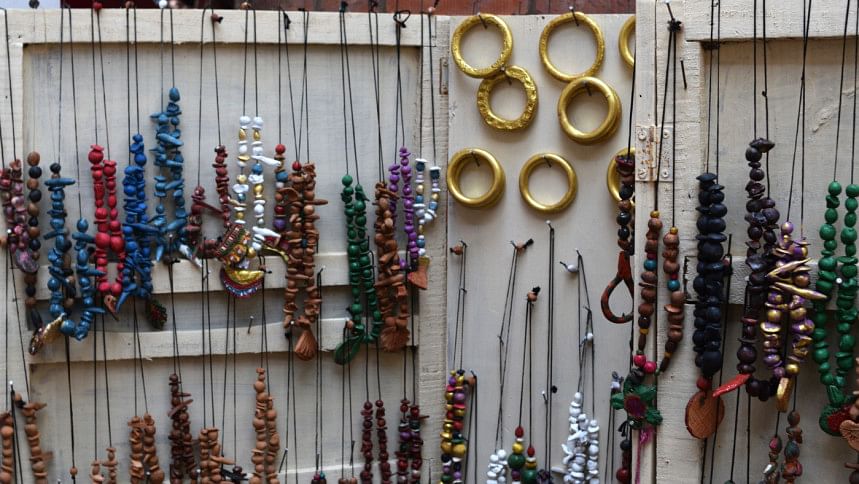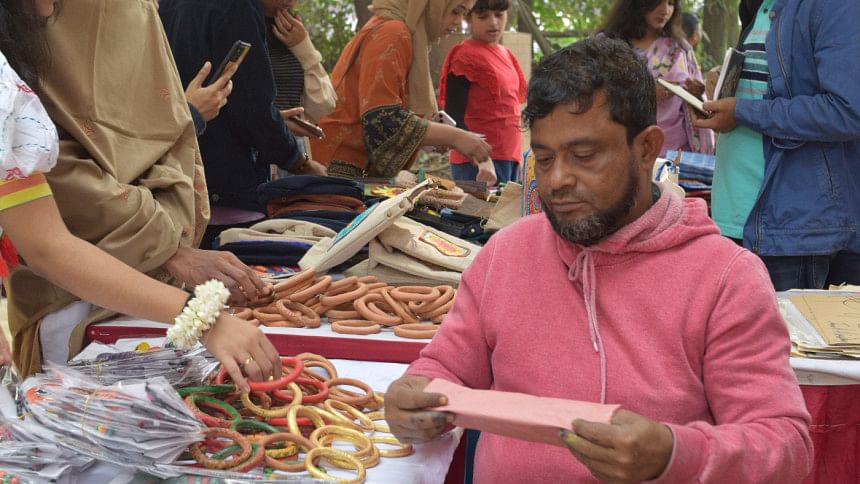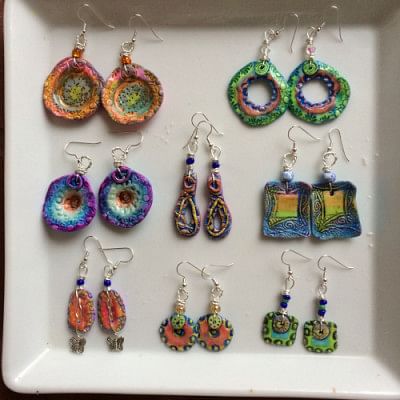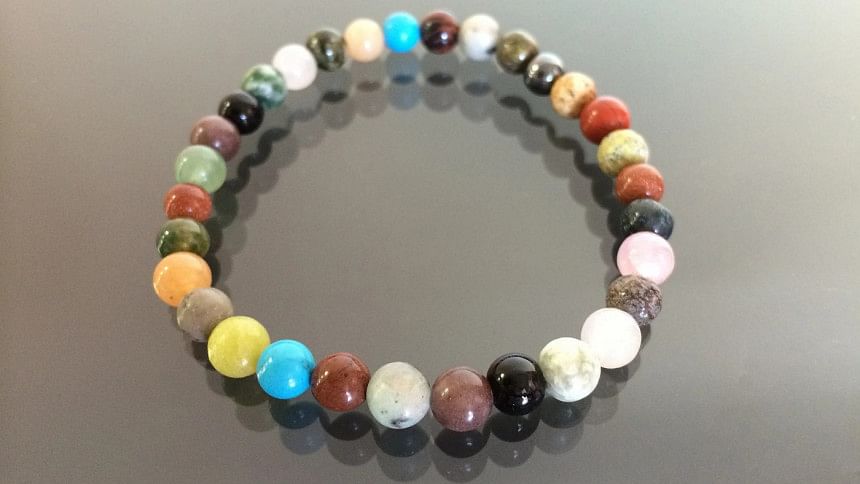Reviving the art of clay and wood jewellery: Belal Hossain's inspiring journey

In today's modern world, our eyes get so easily blinded by the glitz and glamour of gold and diamond that we seldom appreciate the traditional jewellery that our ancestors have worn continually. Clay and wood jewellery are such jewels, which are imbued with the rich history and cultural heritage of our country. The beauty of these jewellery pieces lies in their simplicity, earthiness, and the traditional craftsmanship that goes into creating each piece. Belal Hossain, an artisan of exceptional skill and passion, has been making clay and wood jewellery since 1984.
Hailing from Chapainawabganj, Belal came to Dhaka with the hope of earning a decent amount of money but life had a different plan for him. The reality of our city quickly dawned on him; jobs were scarce and he found himself working as a hawker in New Market, wandering near the Faculty of Fine Arts at Dhaka University — a place that would soon become a defining factor in his life.

"When I was desperately looking for work, the opportunity to work in the Fine Arts Department presented itself to me," Belal recalls. This job, although modest in pay, offered him more than just financial support — it introduced him to the world of art, igniting a passion that would define his future.
He further informs, "Working for the teachers and students, I slowly fell in love with the art of wood carving, a skill I honed under the guidance of Faruk Ahmed Molla, a teacher at the department. Another teacher from the Ceramics Department taught me how to work with Kaolin or china clay."
Initially focusing on wood carving, where he excelled and participated in numerous competitions, Belal soon recognised another calling. He observed the work of Abdul Momen, an elderly artisan known for his clay jewellery.

"After he died, the art of making clay jewellery slowly began to fade away. Without imitating his style, I tried to revive this art on my own," Belal says, reflecting on his journey to keep a fading art alive.
At the Department of Craft at Dhaka University, Belal found more than just employment; he found a sanctuary.
"For artists like us, this Craft Department is a like a safe haven where we learn and work with sincerity and tranquillity," he explains. His schedule is rigorous yet fulfilling, working from 9AM to 4PM at the office, and dedicating the rest of his time to his craft, a routine he follows religiously every day.
The clay used in Belal's jewellery is not just any soil — it is a special kind of clay — particularly sourced and processed by a man named Alauddin for over 30 years. This unique clay is a vital ingredient in the crafts of many artists across the country.
"He is my senior, and we work in the same department," Belal notes, acknowledging the interconnectedness of their crafts.
Despite his skill and dedication, Belal's journey has been fraught with challenges. The loss of his wife and a debilitating stroke forced him to close his shop in New Market. He laments the waning interest in traditional crafts.
"People nowadays prefer imitation or gold jewellery over the earthen jewellery we make. Often, we feel neglected — the government doesn't give us the necessary support, and people buy our products occasionally — especially, during craft and folk festivals," he said.

Yet, Belal remains undeterred.
"My chisel and mallet are my pen and paper. With one hand on the chisel and another on the mallet, I will keep the traditional wood carving and clay jewellery alive as long as I live," he declares with conviction.
Belal Hossain's presence at the Zainul Festival and Art Fair every year, where he sells his products, proves his dedication to his crafts. In the face of adversity, Belal continues to toil in the shadows, preserving a tradition that risks fading into oblivion.
"No one searches for artists like us, but we continue to do our work in the shadow," he says. Belal's story is a poignant reminder of the fragility of traditional arts in the modern world and the steadfast spirit of those who strive to keep them alive.
His hands, which shape clay and carve wood, are also shaping a legacy — one that defies the sands of time, keeping the essence of traditional craftsmanship alive.
So, let us acknowledge our parts and help keep the art of making traditional jewellery alive. They are not just ornaments, but emblematic of a historical narrative and artistic expression. As the world moves towards more sustainable and eco-friendly practices, the relevance of these traditional crafts is only set to increase.
Photo: Ayman Anika / Collected

 For all latest news, follow The Daily Star's Google News channel.
For all latest news, follow The Daily Star's Google News channel. 








Comments